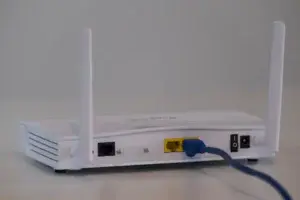
How to Secure Your Home Network from Hackers
Our homes are filled with smart devices these days—laptops, smartphones, tablets, smart TVs, even smart doorbells and thermostats. All of these connect to your Wi-Fi network, and while that’s super convenient, it also means your home network can be a tempting target for hackers. The good news? Securing your home network doesn’t have to be complicated or overly technical. With a few smart steps, you can keep your personal information and devices safe from prying eyes.
Let’s walk through some practical tips for making your home network more secure. For a better understanding of why this is important, check out the importance of cybersecurity in today’s digital world.
Lock Down Your Wi-Fi Password
Think of your Wi-Fi password as the front door key to your digital home. If it’s weak or easy to guess, you’re practically inviting unwanted guests inside.
- Choose a Strong Password: Avoid using simple passwords like 123456, password, or your pet’s name. Instead, go for a mix of uppercase and lowercase letters, numbers, and special characters.
- Don’t Reuse Passwords: If you use the same password for your Wi-Fi as you do for email or social media, a breach on one service could put your network at risk. To safely manage your credentials, learn more with this review of the best password managers.
- Change Default Router Credentials: Many routers come with default login information (like “admin” and “password”). Hackers know these defaults, so change them right away.
- Hide Your Network (Optional): If you want to be extra cautious, you can set your Wi-Fi not to broadcast its name (SSID). That way, people can’t easily see it in the list of available networks.
Common issue: Many users never bother to change the default router password, making it incredibly easy for hackers to gain control. Updating this is one of the simplest but most effective steps you can take. Learn more tips for troubleshooting network connectivity issues.
Turn On Built-In Security
Your router and devices already come with security features—it’s just a matter of using them.
- Enable WPA3 (or WPA2 if WPA3 isn’t available): This is the encryption standard that protects the traffic between your devices and your Wi-Fi network. It makes it much harder for attackers to snoop. You may also want to consider an extra layer, such as a good antivirus software.
- Turn On Your Router’s Firewall: Most routers include a basic firewall that blocks
 unwanted traffic. Make sure it’s enabled in your router settings.
unwanted traffic. Make sure it’s enabled in your router settings. - Disable Remote Management (Unless Needed): Some routers allow you to log in remotely, but if you don’t need this feature, it’s best to turn it off. It reduces potential entry points for hackers.
- Set Up a Guest Network: If friends or visitors often connect to your Wi-Fi, set up a separate guest network. This keeps your main devices and files more secure.
Common issue: Many people never log into their router’s settings after the initial setup. Spending just 15 minutes in the settings menu can dramatically improve your security. For more about preventing vulnerabilities, see best antivirus software for maximum protection.
Keep Everything Updated
Updates aren’t just about new features—they often patch security holes that hackers exploit.
- Update Your Router’s Firmware: Just like your computer or phone, routers need updates too. Check your router’s manufacturer website or app to make sure you’re running the latest version. If you’re unsure how to do this or having issues, see these network troubleshooting tips.
- Update All Devices: From laptops and smartphones to smart speakers, keeping devices updated ensures they have the latest security fixes.
- Enable Automatic Updates: When possible, set devices to update automatically. This saves you the hassle of remembering and makes sure nothing slips through the cracks.
- Replace Old Equipment: If your router is more than five or six years old, it may not support the latest security standards. Investing in a new one can be a major boost to your network’s safety — and can help with improving internet connection speed and reliability.
Common issue: Many people forget routers need updates just like computers. Neglecting this step leaves your whole network vulnerable, even if your devices are up to date.
Add Extra Safety Nets
Even with strong passwords and updates, it’s wise to add a few more layers of protection.
- Use a VPN (Virtual Private Network): A VPN encrypts your internet traffic, making it
 much harder for hackers (or nosy internet providers) to track your activity. For more comprehensive protection, consider pairing a VPN with the best antivirus software.
much harder for hackers (or nosy internet providers) to track your activity. For more comprehensive protection, consider pairing a VPN with the best antivirus software. - Install Antivirus Software: While it won’t stop someone from breaking into your Wi-Fi, it can protect individual devices from malware that may slip through. Check out this guide on antivirus protection options.
- Turn Off Devices You’re Not Using: If you have smart gadgets you rarely use, turn them off or disconnect them from Wi-Fi when not needed. Fewer devices online mean fewer potential entry points.
- Enable Two-Factor Authentication (2FA): If your router or devices support 2FA, turn it on. This adds an extra layer of protection on top of your password. For tips on managing the security of your passwords, see this review of the best password managers.
- Monitor Your Network: Many modern routers have apps that show which devices are connected. If you see something unfamiliar, investigate right away. If you suspect network problems or need to check device connections, don’t miss these network troubleshooting tips.
Common issue: Smart home devices are often overlooked. Things like security cameras or smart lightbulbs may not seem like targets, but hackers can use them as stepping stones into your larger network. If you care about overall digital safety, learn more about cybersecurity in today’s digital world.
Conclusion: Keep Your Digital Home Safe
Securing your home network might sound intimidating, but it really comes down to a few smart habits—strong passwords, enabling built-in protections, staying on top of updates, and adding a couple of safety nets. These steps can go a long way toward keeping hackers out and your personal information safe.
The truth is, most hackers look for easy targets. By taking these precautions, you’re already making your network a much tougher nut to crack.
How do you keep your home Wi-Fi secure? Do you use extra tools like a VPN, or just stick to strong passwords? Share your thoughts in the comments—I’d love to hear your strategies! 🔒💻📶

 unwanted traffic. Make sure it’s enabled in your router settings.
unwanted traffic. Make sure it’s enabled in your router settings. much harder for hackers (or nosy internet providers) to track your activity. For more comprehensive protection, consider pairing a VPN with
much harder for hackers (or nosy internet providers) to track your activity. For more comprehensive protection, consider pairing a VPN with